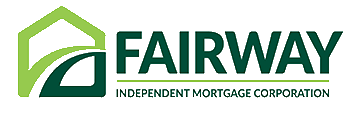A Conventional loan program typically refers to a Fannie Mae or Freddie Mae program.

Loans underwritten to “Conventional” guidelines tend to have more aggressive interest rates than other types of loans.
The reason is because there is a large “secondary” market available which makes it easy for lenders to sell these loans, thus freeing up more funds for future loans.
This is versus a “portfolio” loan. A portfolio lender may have more flexible underwriting guidelines since they will keep the loan “on their books”.
However, most portfolio lenders do not offer 30 year fixed rates, instead offering adjustable rate mortgage programs.
When a potential home owner (or current home owner) has excellent credit, solid and verifiable income, at least 10% down payment or equity, and is not eligible for a program like VA, then a Conventional loan may be the loan of choice. In Orange County the loan limit is $625,500.
This means that somebody buying a home in OC with just 10% down could go to a price of $695,000.
Piggy Back Loan Program
There are ways to “bridge” the gap for buyers or refinancers looking to finance up to 90% loan to value. There are now lenders of Equity Lines that can go to 90% loan to value. This makes it possible to put only 10% down on prices above $781,875. For example, lets say Johnny OC wants to buy a for $781,875 with 10% down. They would get a 1st mortgage of $625,500 and a equity line of $78,188. They would then only need a down payment of $78,875.
Types of Conventional Loans
There are fixed rate and adjustable rate mortgage loan programs. Most Conventional loans are amortized over 30, 25, 20, 15, or 10 years. The shorter the term the higher the payment. A fixed rate mortgage will have a fixed rate during the entire term. For example, a 30 year fixed rate of 4.25% means the borrower will have the same rate and payment during the entire 30 year term of the loan. Adjustable Rate Mortgages typically have an initial fixed rate period before becoming adjustable. Below are typical adjustable rate Conventional programs.
- 10/1 ARM: The rate is fixed for the initial 10 years. In year 11 the rate will begin adjusting either annually a max of 2% or semi-annually a max of 1%. The rate is then adjustable to the remaining 20 years of the term. This is a good program to consider if the rate is lower than a 30 year fixed and the borrower is fairly certain that they will be out of the home and/or loan within the next 10 years.
- 7/1 ARM: The rate is fixed for the initial 7 years. In year 8 the rate will begin adjusting either annually a max of 2% or semi-annually a max of 1%. The rate is then adjustable to the remaining 23 years of the term. This is a good program to consider if the rate is lower than a 30 year fixed and the borrower is fairly certain that they will be out of the home and/or loan within the next 7 years.
- 5/1 ARM: The rate is fixed for the initial 5 years. In year 11 the rate will begin adjusting either annually a max of 2% or semi-annually a max of 1%. The rate is then adjustable to the remaining 25 years of the term. This is a good program to consider if the rate is lower than a 30 year fixed and the borrower is fairly certain that they will be out of the home and/or loan within the next 5 years.
The first step in determining which type of program is your best option is the have your loan officer prepare a detailed analysis of the different options available.
Conventional Loan Question?
Call or Text me at 949-829-1846 for immediate assistance.
